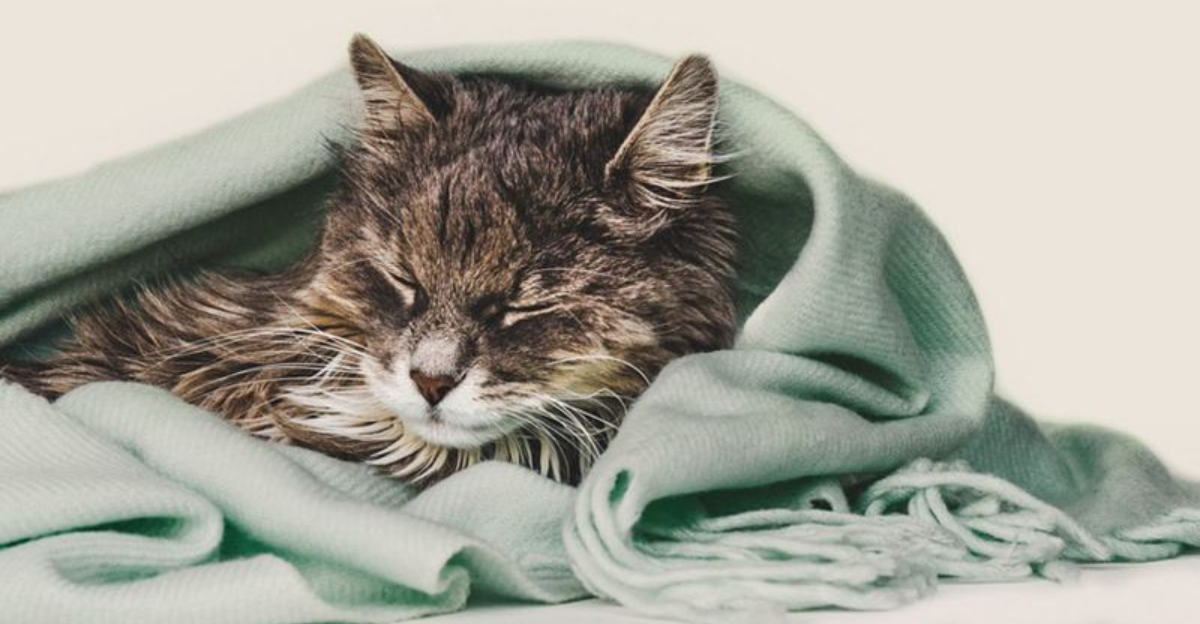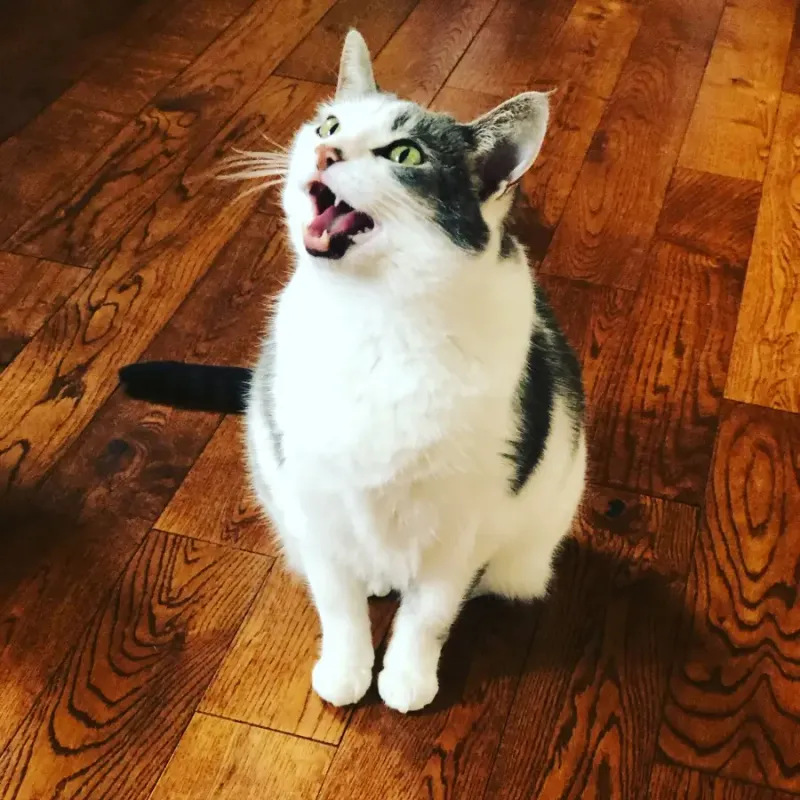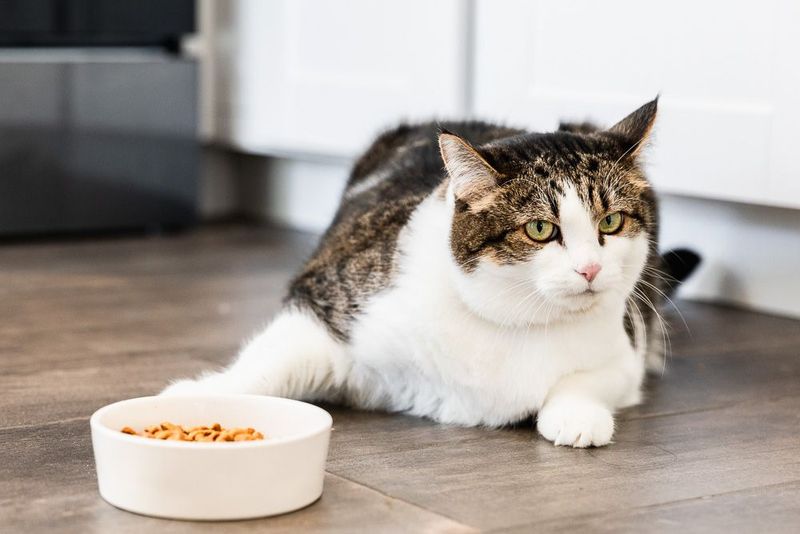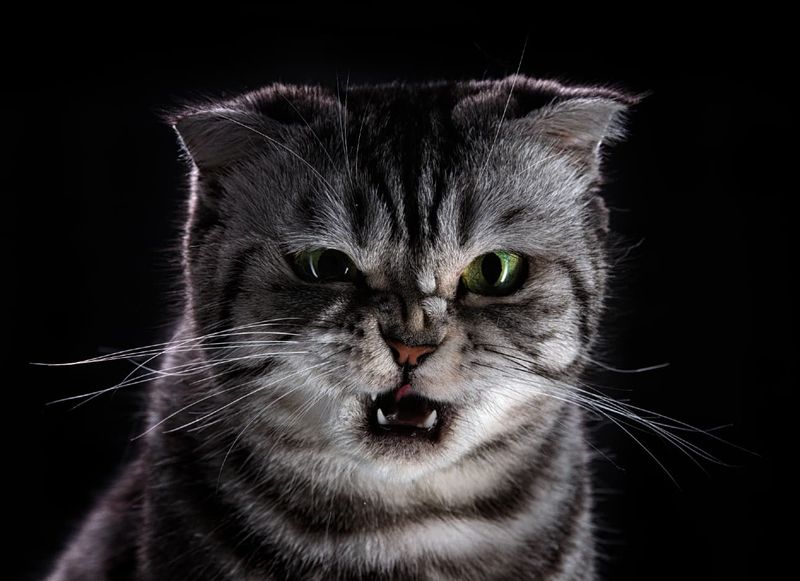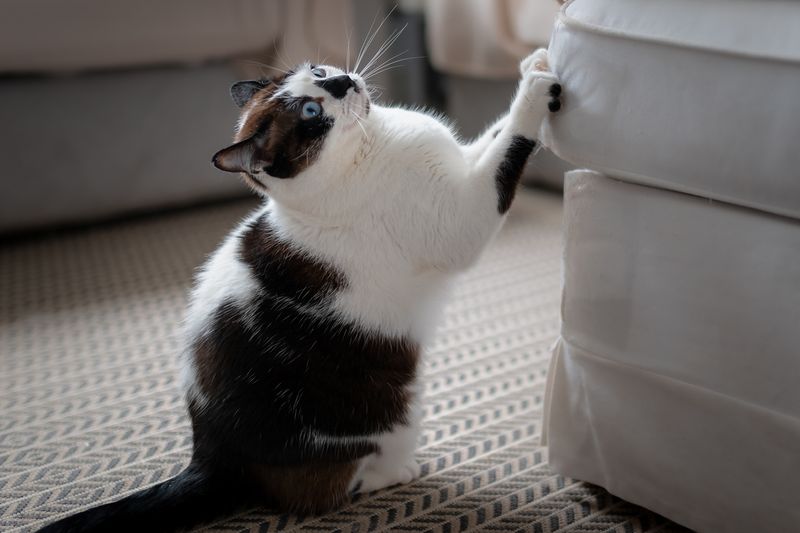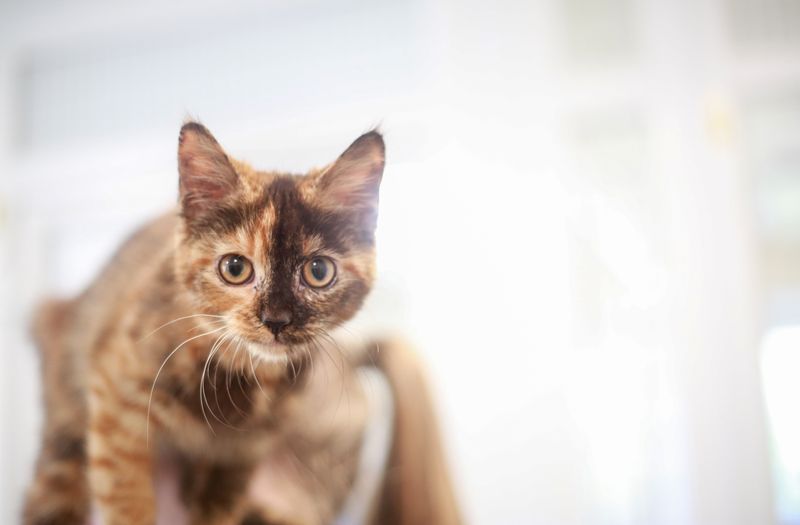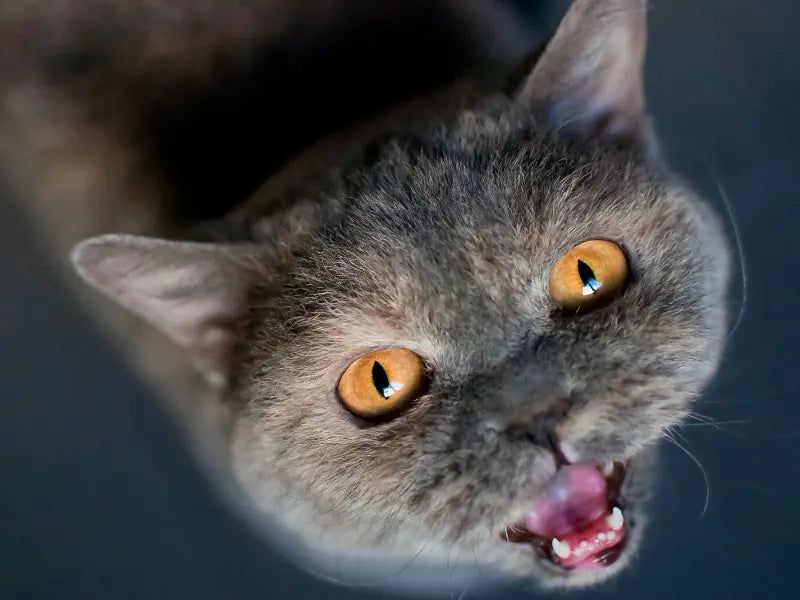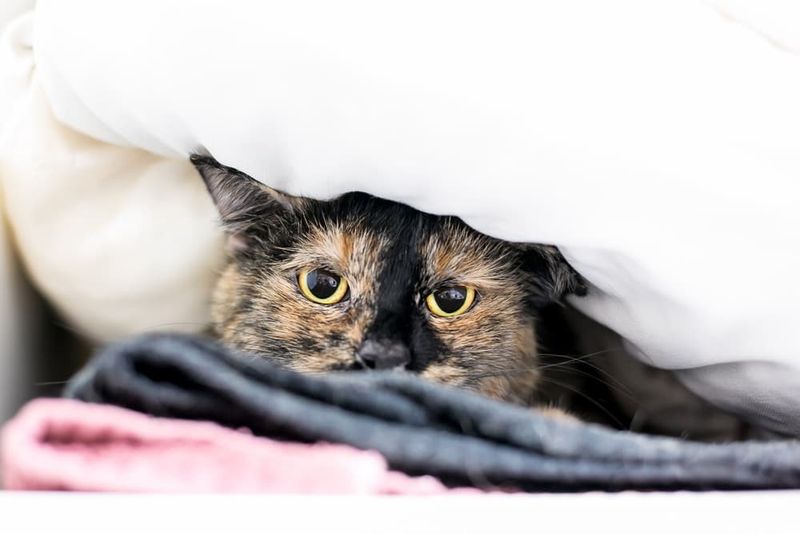📖 Table of Content:
- 1. Increased Vocalization
- 2. Hiding or Avoidance
- 3. Excessive Grooming or Over-Grooming
- 4. Changes in Appetite
- 5. Litter Box Issues
- 6. Aggression or Behavioral Changes
- 7. Excessive Scratching
- 8. Dilated Pupils
- 9. Restlessness or Pacing
- 10. Changes in Sleeping Patterns
- 11. Disorientation or Confusion
- 12. Physical Symptoms
Cats are known for their mystique, subtle expressions, and independent nature, making it difficult to spot when something is wrong. While they may not openly show discomfort or illness, behavioral and physical changes often serve as quiet signals that a cat is in distress. For pet owners, being able to interpret these signs can be the difference between early treatment and prolonged suffering.
Changes in behavior may occur gradually or appear suddenly, and they often reflect emotional stress, underlying illness, or environmental shifts. A cat might start hiding more frequently, acting aggressively, or altering its grooming habits—seemingly small actions that are easy to overlook. However, when viewed in context, these shifts reveal a larger picture of a cat struggling with more than just a bad mood.
Learning to read these warning signs isn’t just helpful; it’s essential for anyone who shares their life with a feline companion. This guide outlines 12 common red flags that suggest your cat may not be okay, from vocal outbursts to physical symptoms. Each behavior is explained in detail to help you understand the potential cause and what actions you might consider taking in response.
1. Increased Vocalization
Uncharacteristic increases in your cat’s vocal activity can be an early sign of distress. Cats typically develop a communication pattern with their owners, so when the frequency or intensity of their meows, yowls, or cries changes, it’s worth paying attention. These vocalizations can stem from anxiety, disorientation, or even physical discomfort. In older cats, excessive vocalization might be associated with cognitive dysfunction or hearing loss. Hunger or environmental changes—like new pets, visitors, or a move—can also provoke louder or more frequent meowing. When your cat begins pacing and vocalizing at night, it may be dealing with confusion or separation anxiety. Monitoring patterns and context can provide valuable insight into what your cat is trying to convey.
2. Hiding or Avoidance
Retreating into closets, under beds, or behind furniture more than usual is often a response to stress or illness. Cats instinctively hide when they feel vulnerable, whether due to pain, fear, or emotional upset. While some solitude is normal, consistent avoidance of people and activity should raise concern. This behavior could follow changes in the home, such as construction noise, a new pet, or visitors. Medical issues like infections or internal discomfort also drive cats into hiding to protect themselves. When a cat that was once social becomes withdrawn, the change is usually meaningful. Observing whether the hiding coincides with eating less or acting lethargic can help clarify the issue.
3. Excessive Grooming or Over-Grooming
Obsessive grooming behaviors often point to psychological or dermatological issues. It might start with an innocent lick but progress to persistent cleaning that results in bald patches or skin irritation. Cats sometimes use grooming as a coping mechanism for stress, not unlike a human biting their nails. On the physical side, skin allergies, parasites, or pain in a particular spot can lead to focused grooming of that area. Stress-induced over-grooming typically occurs on the belly, legs, or flanks and can be exacerbated by changes in routine or environment. Left unchecked, it can escalate into open wounds or infections requiring veterinary care. Keep an eye out for signs of discomfort during grooming or a compulsive focus on a single area.
4. Changes in Appetite
Altered eating patterns are often one of the first signs that something is off with a cat. A sudden loss of interest in food may indicate dental pain, gastrointestinal problems, or stress-related issues. Alternatively, increased hunger could be linked to conditions such as hyperthyroidism or diabetes. Cats are creatures of habit, so even skipping one or two meals without cause is noteworthy. Emotional distress, including anxiety or depression, also impacts feeding behavior and can result from household disruptions or loneliness. Watch for changes in weight, vomiting, or signs of discomfort during meals as they can provide additional clues. A visit to the vet is warranted if altered appetite persists beyond a day or two.
5. Litter Box Issues
Unexpected elimination outside the litter box can be both a behavioral and medical red flag. Cats dealing with urinary tract infections, kidney issues, or digestive problems may avoid their usual spot due to pain. On the emotional side, stressors such as a new pet, a change in litter type, or even a dirty box can prompt a cat to seek alternative locations. Marking territory through urination, especially in multi-cat homes, may also be a symptom of insecurity or fear. Sometimes, the litter box itself becomes associated with discomfort if the cat experienced pain while using it. It’s crucial to rule out medical causes before assuming the problem is behavioral. Addressing this issue early can prevent escalation and household damage.
6. Aggression or Behavioral Changes
Uncharacteristic hostility toward people or other animals often signals underlying problems. A once-gentle cat that hisses, growls, or scratches without provocation may be trying to communicate distress. Pain is a common driver of sudden aggression, especially in cases involving arthritis, dental disease, or injury. Emotional tension—such as fear, frustration, or overstimulation—can also trigger reactive behavior. Cats that feel cornered or threatened might lash out when they previously would have fled. Sudden behavioral swings, including hyperactivity or apathy, may hint at neurological conditions or hormonal imbalances. Early recognition and professional input are essential to avoid reinforcing fear-based aggression.
7. Excessive Scratching
An uptick in scratching behavior may not just be a nuisance—it could point to something more serious. Environmental stress, boredom, or anxiety can cause cats to scratch more frequently or inappropriately. Skin irritants like fleas or allergies also lead to persistent scratching, which may cause sores or scabbing. Some cats use scratching as a form of territorial marking, particularly when they feel threatened by changes in their surroundings. Providing appropriate scratching outlets can help redirect the behavior, but if the frequency increases, deeper issues should be investigated. Unusual locations for scratching—such as doors, bedding, or vertical blinds—might suggest an emotional trigger rather than a physical one. Be sure to inspect your cat’s skin and claws for signs of inflammation or damage.
8. Dilated Pupils
Striking changes in your cat’s eyes can reveal a lot about their emotional state or health. Constantly dilated pupils, especially in normal lighting, may indicate stress, fear, or even hypertension. Some cats exhibit dilated pupils during moments of excitement or agitation, but if the condition persists, it could signal something more serious. Pain and neurological issues are also known to affect pupil size and symmetry. A cat that appears wide-eyed and on alert may be reacting to chronic anxiety or overstimulation. If you notice uneven dilation or light sensitivity, it’s advisable to have your vet examine your cat’s vision and overall health. These ocular signs, though subtle, can reflect significant internal conditions.
9. Restlessness or Pacing
Relentless motion or an inability to relax often points to internal unrest. Cats that pace back and forth or repeatedly change resting spots may be grappling with anxiety or physical pain. Environmental changes—like moving furniture or introducing a new pet—can unsettle a cat’s sense of safety. Some restlessness can also stem from cognitive decline, especially in aging felines. Watching your cat navigate the house aimlessly or meow at closed doors may indicate a deeper problem. Pain from arthritis or gastrointestinal discomfort may make it hard for your cat to get comfortable. This behavior is typically most visible during quiet times when a cat would usually be resting or asleep.
10. Changes in Sleeping Patterns
A shift in your cat’s typical rest habits deserves closer attention. While cats are known for sleeping up to 16 hours a day, increases in drowsiness or hyper-alertness can signal illness or stress. Sleep disturbances, such as waking often at night or becoming more active during unusual hours, might be signs of anxiety or cognitive decline. Alternatively, oversleeping can be linked to lethargy brought on by infections, fever, or chronic disease. You might also notice your cat sleeping in new, less secure locations, which could indicate that they’re feeling vulnerable. This disruption in behavior is especially important in cats with other symptoms like appetite loss or hiding. Keeping a log of sleep habits can help spot patterns and guide a discussion with your vet.
11. Disorientation or Confusion
Symptoms like staring at walls, getting stuck behind furniture, or pacing in circles should never be dismissed. These can be hallmarks of feline cognitive dysfunction, a condition akin to dementia in humans. Often observed in senior cats, this confusion reflects changes in the brain that affect memory, navigation, and responsiveness. Stress and new environments can also temporarily disorient a cat, though the behavior should resolve quickly. If your cat seems to forget feeding routines or fails to recognize familiar people, neurological causes should be considered. In some cases, toxins, head trauma, or brain tumors may also produce disoriented behavior. A thorough veterinary evaluation is needed to determine whether the confusion is psychological or physiological.
12. Physical Symptoms
Visible signs like vomiting, diarrhea, limping, or coughing suggest that a medical issue is already well underway. While an occasional hairball or minor digestive upset may not warrant alarm, ongoing or severe symptoms require immediate attention. Illnesses ranging from respiratory infections to gastrointestinal disorders can present in subtle ways at first. Cats are masters of hiding pain, so by the time physical symptoms appear, the condition may have progressed significantly. Pay special attention to signs like labored breathing, pale gums, or sudden weight loss. These physical manifestations often accompany behavioral changes, making them even more critical to identify. Prompt veterinary care is vital to diagnose and treat the underlying cause effectively.
